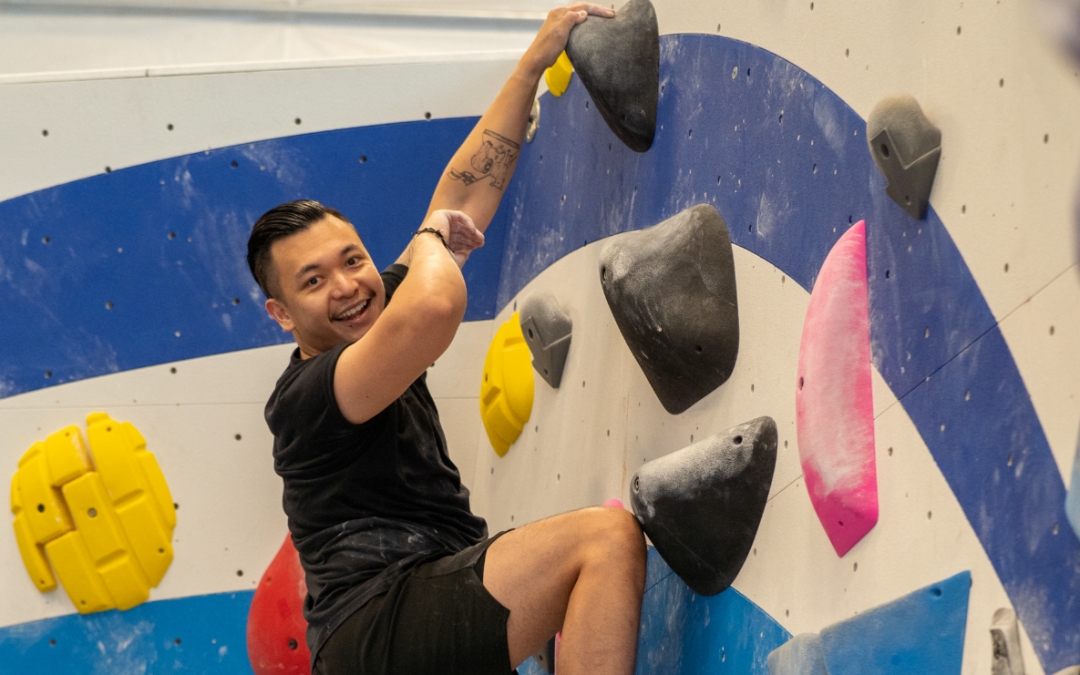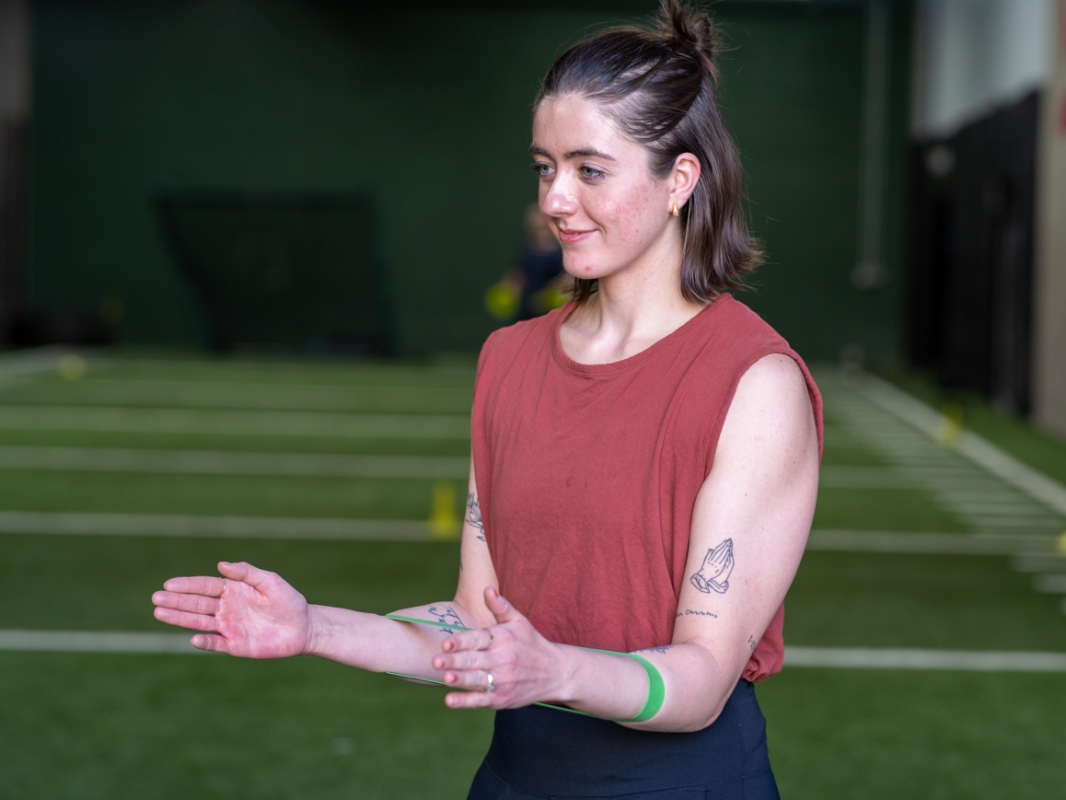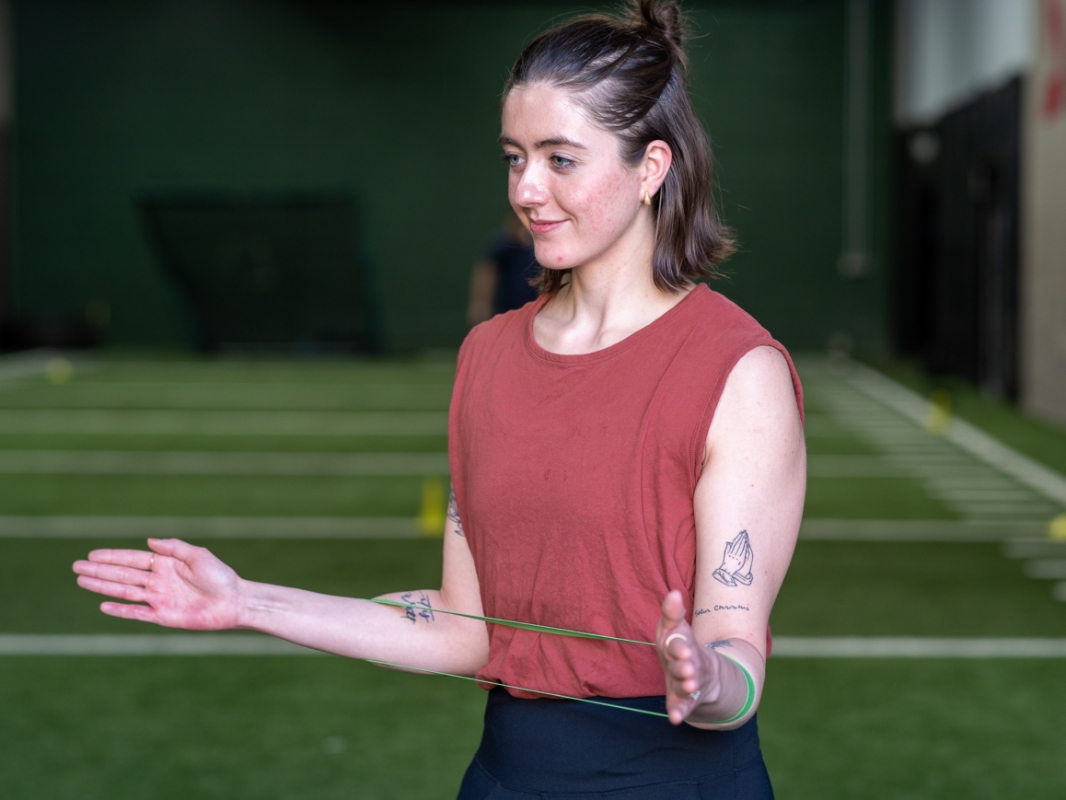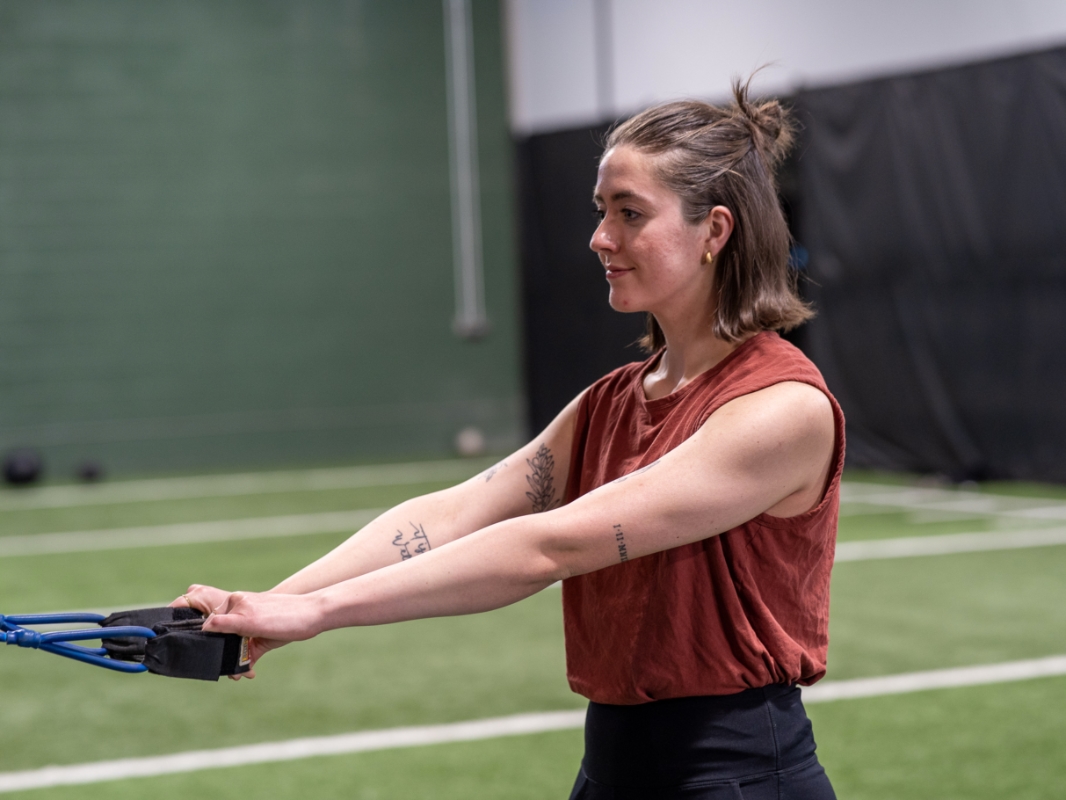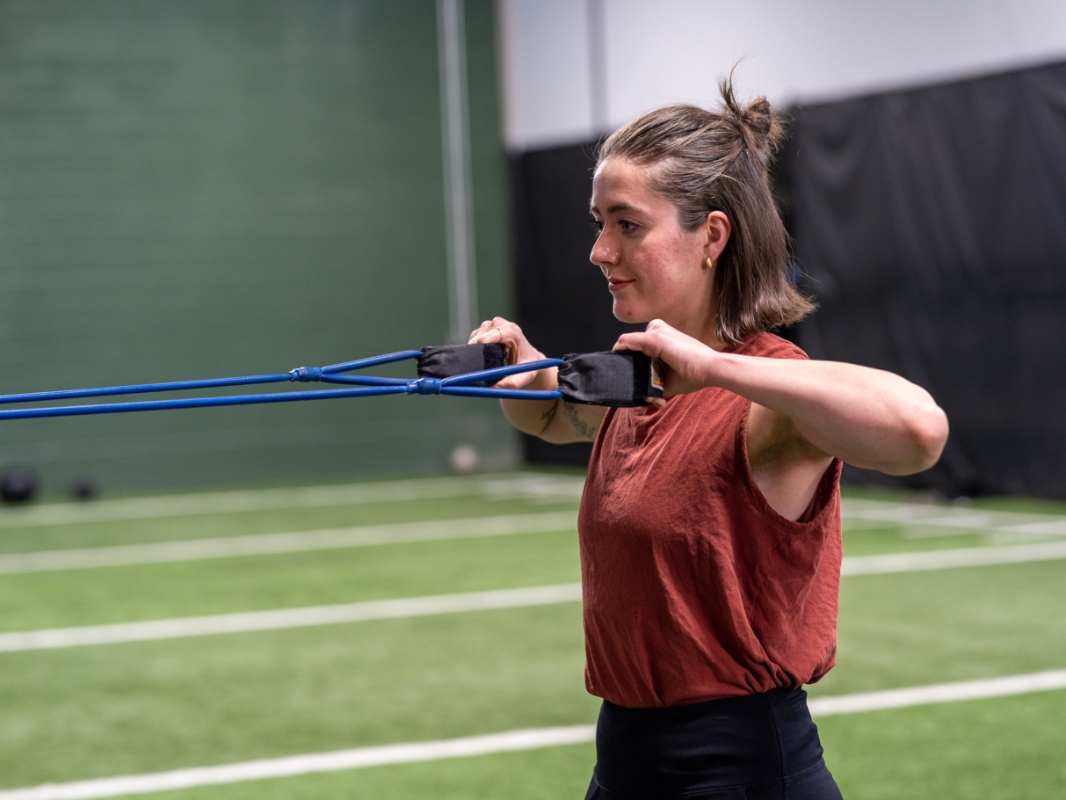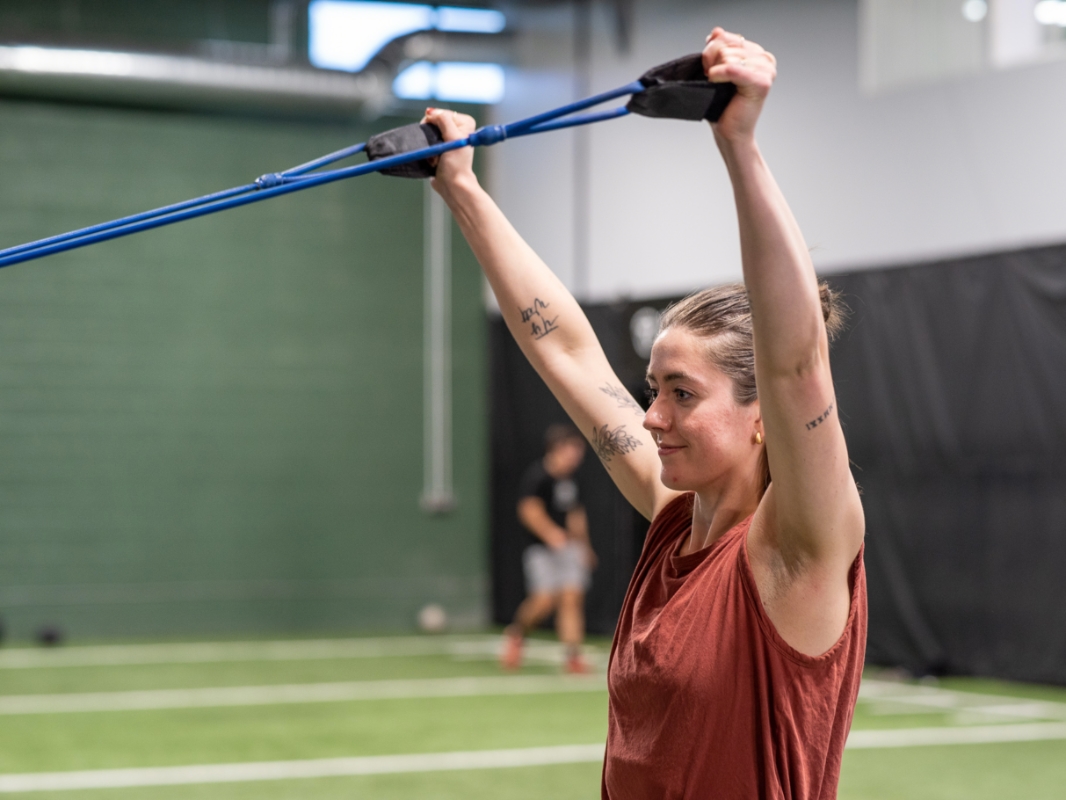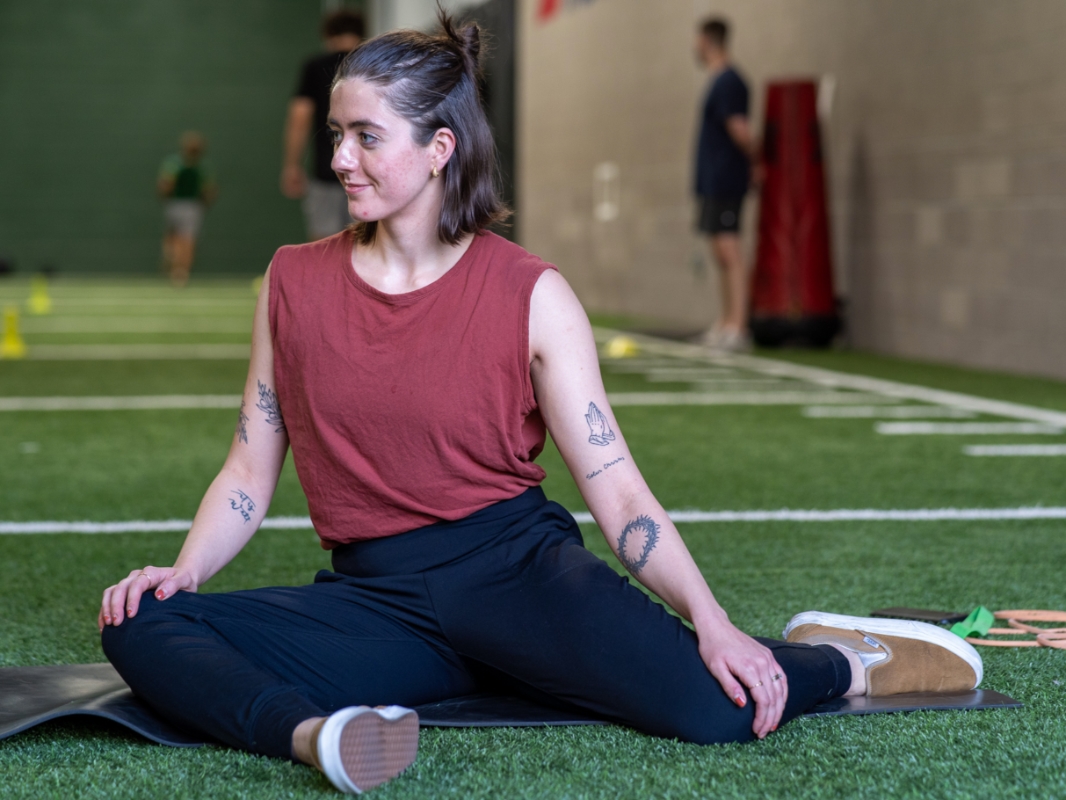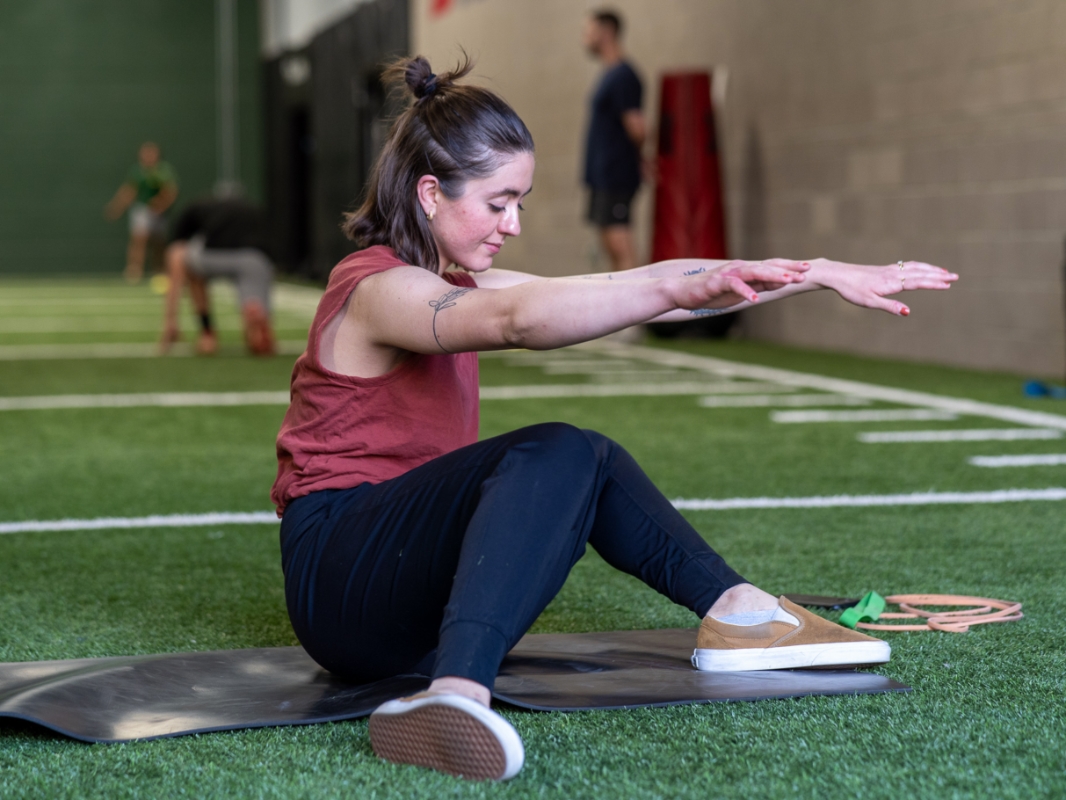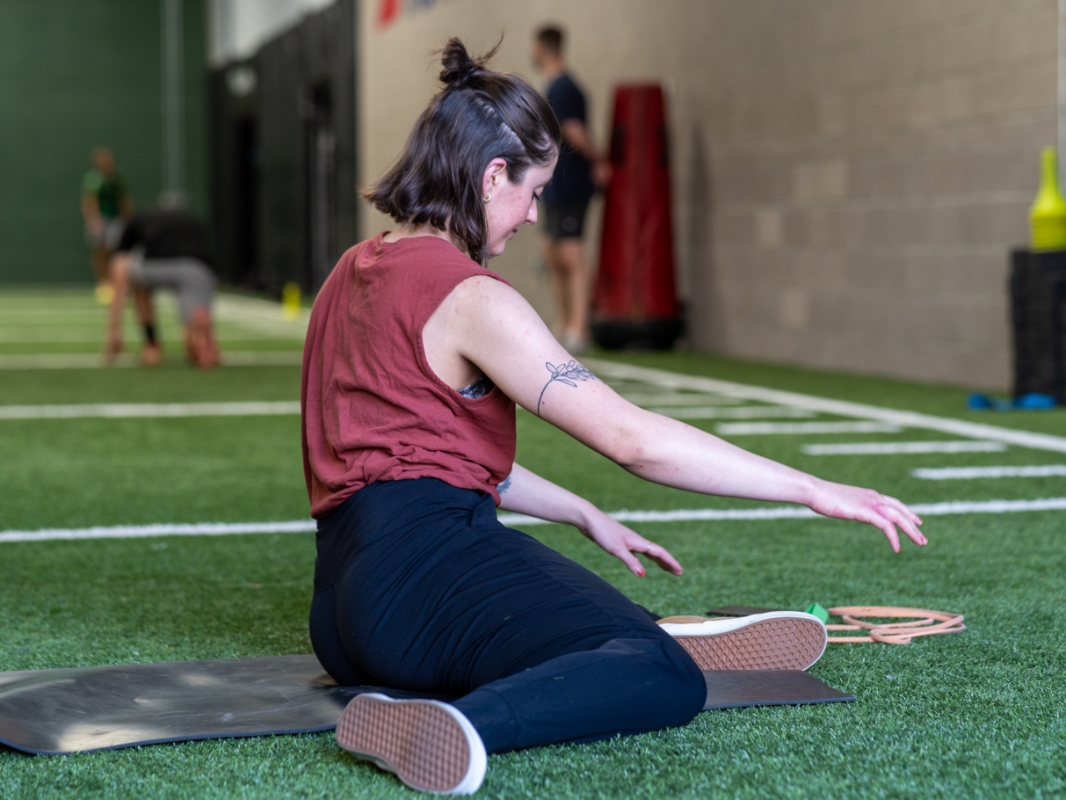By: Sam Gesicki, PT, DPT, TSAC-F, and Carly Szemerey, PT, DPT
Climbers have an almost unique dedication to their sport. It is not uncommon to stumble into the gym and hear one or two climbers discussing what injuries have been bugging them for the past day, week, month, or even year.
No climber wants to be taken off the wall and away from the sport they love due to an injury. While many attempt to climb through the aches, pains, pulls, and tears they experience, there are preventative measures and treatments climbers can incorporate into their routine to stay on the wall.
Common Injuries in Climbing
Your fingers have pulleys that are connected all the way up to the flexors in your forearm. These pulleys are tendons and can gain strength over time. When there is overuse, or a bad fall, or you pull too hard on a crimp hold, your pulleys can be strained or even tear. These injuries are quite common in active climbers, but other tendon injuries in the upper extremity can be more prevalent amongst climbers.
Injuries in the wrist, elbow, shoulder, and all of the muscles and tissues surrounding those joints can occur while climbing. This could be due to weakness, improper form while mantling, pressing, or gastoning. Injuries that happen can also be attributed to a deeper issue, which can be addressed by a physical therapist.
Climbing is extremely hard on the body – there is no doubt about that. There are a few ways you can work to avoid these common injuries.
Targeted Climbing Preparation
Strength Training
Strength training can not only help a climber improve their performance on the wall, it can also help reduce the risk of injury. Building up muscle in opposing muscle groups can help make sure you are balanced for the muscles you primarily pull with on the wall.
Learn more about having a targeting strength training routing for climbing in Strength for the Climbing Wall
Climbing Different Routes
Changing up the style of climbing you project from session to session can also be a major benefit to you. Everybody finds the hold type that they like or the type of climb they like, but diversification with that would help with some overuse injuries.
So, if you prefer slab and have found yourself seeking out the slab wall time and time again, head over to overhand and roof problems. And vice versa. Different muscle groups and skills are engaged in different climbing styles, so switching it up will not only make you a more balanced, well-rounded climber, you are also working to prevent overuse injuries.
Pre-Climb Targeted Warm-Up
A dedicated, off-the-wall warm-up routine can help prime your muscles to be ready to take on the demands of the climb. Two areas that can specifically get you closer to the wall are your shoulders and your hips.
To warm up your shoulders, you want to be working on being able to internally and externally rotate the joints. Working through this full range of motion with a little bit of tension will prepare you for any strain put on the joint.
Banded External Rotation: Keep your elbows at your side and lift your hands up 90 degrees. Place a band around your forearms and pull your hands away from each other while keeping your elbows at your side. Be aware of your scapula and other shoulder musculature engaging during this warm-up.
Face-pulls: Using a band fixed to a chest-level height, pull the band with both hands towards your face and then work into an overhead press.
To warm up your hips, similarly working through internal and external rotation is key to take the load off of your shoulders while climbing. Your mobility in your lower body is an essential, yet often overlooked, key to climbing. Your hips can keep you closer to the wall so you don’t need to pull yourself in with your arms, making you spend your energy during your climb more effectively.
90/ 90 Hip Switches: Sit on the floor with one leg’s outer thigh and calf on the ground and make a 90-degree angle. This leg should extend in front of your hip. With the other leg, rotate it so your inner thigh and calf are on the floor. This leg should extend slightly from the side of you. Without moving your feet from their position on the ground, lift your knees, and switch the position of your legs.
Adding in dedicated warm-up exercises that aid in any weaknesses, aches, or pains that you have experienced while climbing can help you reduce the stress your body takes on the wall.
Physical Therapy for Climbers
If you have any injuries that are preventing you from climbing, going to a physical therapist first is vital. Physical therapy can help treat the symptoms you are experiencing. Alongside that, your physical therapist can help address muscle imbalances and stability that may be affecting your climbing.
Alongside individualized exercise prescription to help you move better on the wall, they will also use various forms of manual therapy to address inflammation. Dry needling is especially effective for climbers, especially if the injury is chronic. It allows the physical therapist to target the inflamed tissues a lot quicker and provide symptom relief for the climber.
Learn more about Dry Needling at Spooner
Spooner therapists want to help you get back on the wall as quickly and safely as possible after injury.
Climbing on an injury, or letting an injury sit can cause further problems down the road. Schedule an appointment with a Spooner therapist today to get back on the wall and projecting your climbs.

